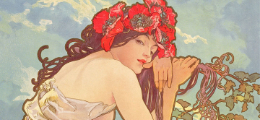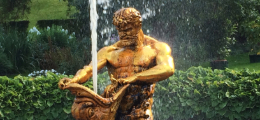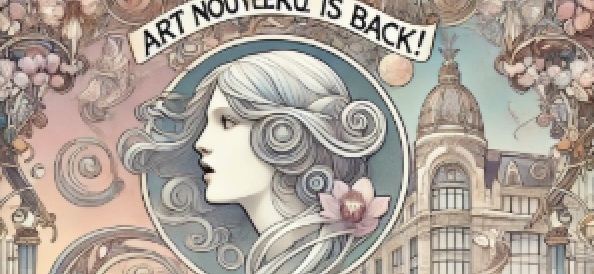A prominent player in the French Art Nouveau movement in the 1920s, you’ve probably seen the work of Czech artist Alphonse Mucha utilized in French style cafés the world over – even informing the overall design of Beijing’s very own Modernista. Entry is free but you must first reserve your spot here (recent travel history required).
Through almost 300 works, the exhibition traces the career of Mucha (1860-1939), from Paris where he acquired international fame as an illustrator, to the pre-war Czechoslovak Republic where he participated in the revival of the pre-war Slavic art. The exhibition also presents the artist’s influence on illustration and popular visual culture, from 1960s psychedelia to today’s manga.
The exhibition is divided into 5 sections :
- “Inspirations of the Mucha Style” reveals the artist’s footsteps from his boyhood in Moravia through the 1890s, when he attained fame as a poster designer and presents various works of art, crafts, and books from his own collection that contributed to the development of the Mucha Style. Mucha remained a devoted collector throughout his life, and drew on these objects as sources of inspiration for his own work.
- “The Art of Storytelling” shows how Mucha began treating illustrations as works of fine art, and decided to produce illustrations following the academic procedures and methods of formulating concepts and making sketches and studies.
- “Le Style Mucha & Its Idiom” features Mucha’s most renowned artworks. He gained fame as a poster artist after he happened to receive a commission for a theatre poster, Gismonda (No. 52) featuring the great French actress Sarah Bernhardt. Mucha became Bernhardt’s exclusive designer. He not only created theatre posters but also stage sets and costumes. Mucha’s ‘beautiful, approachable, and memorable’ poster design came to be known among Parisians as ‘Le Style Mucha’, and formed a template for modern Art Nouveau.
- “Art Nouveau Revival & Counterculture” shows how Mucha’s graceful, peaceful, ans ideal fantasy world has been reappropriated by the 1960s’ counterculture movement.
- “The Manga Style – The Line of Beauty” later on, in the late 1980s, the Mucha aesthetic was also discovered by the makers of emerging computer games and fantasy novel illustrations, two strongly connected genres.
The exhibition takes places at Guardian Art Center, Beiging, China 嘉德艺术中心 (2F, 1 Wangfujing Dajie, Dongcheng District).
For those passionate about Art Nouveau, Art Nouveau Club offers a comprehensive guide to exhibitions worldwide, from Paris to Tokyo.







